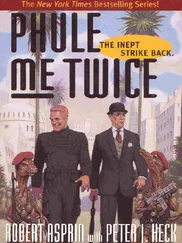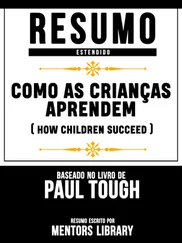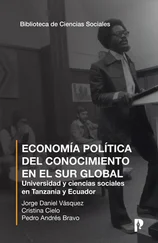“I am almost completely numb”: Elizabeth Vicary, “I Hate Myself,” Elizabeth Vicary’s Blog, July 13, 2008, http://lizzyknowsall.blogspot.com/2008/07/i-hate-myself.html.
“he put his arm around me”: Elizabeth Vicary, “My Weekend: A Date, a Saturday Tournament, the Bus to Saratoga Springs,” Elizabeth Vicary’s Blog, March 2, 2009, http://lizzyknowsall.blogspot.com/2009/03/my-weekend-date-saturday-tournament-bus.html.
“The first day and a half was pretty bad”: Elizabeth Vicary, “Thoughts on Girls, High School Nationals,” Elizabeth Vicary’s Blog, April 20, 2010, http://lizzyknowsall.blogspot.com/2010/04/thoughts-on-girls-high-school-nationals.html.
One of James’s half brothers was convicted: Dylan Loeb McClain, “One Move Ahead of Opponents, and Two Ahead of Trouble,” New York Times City Room Blog, June 28, 2011.
“When it comes to ambition”: Aaron and Claire Summerscale, Interview with a Grandmaster (London: Everyman Chess, 2001), 126.
Inspired by these words: Matan Prilleltensky, “Choosing to Break 2200,” Chess Life Online, January 15, 2011.
“Chess is a creative and beautiful pursuit”: Aaron and Claire Summerscale, Interview, 128.
Malcolm Gladwell brought to popular attention: Malcolm Gladwell, Outliers: The Story of Success (Boston: Little, Brown and Company, 2008).
the typical grand master had started playing at seven: K. Anders Ericsson, Ralf Th. Krampe, and Clemens Tesch-Romer, “The Role of Deliberate Practice in the Acquisition of Expert Performance,” Psychological Review 100, no. 3 (1993).
Polgar was single and childless: Carlin Flora, “The Grandmaster Experiment,” Psychology Today, July 1, 2005.
Each girl began studying chess: David Shenk, The Immortal Game: A History of Chess (New York: Anchor Books, 2007), 132.
they were installed in an apartment in Brighton Beach: Fred Waitzkin, “A Father’s Pawn,” New York Times Magazine, May 13, 1990.
got a degree from a Long Island law school: Dylan Loeb McClain, “A Chess Master Returns Older, and Maybe Wiser,” New York Times, January 27, 2008.
Csikszentmihalyi studied what he called optimal experiences: Mihaly Csikszentmihalyi, Flow: The Psychology of Optimal Experience (New York: Harper and Row, 1990), 3.
“when a person’s body or mind is stretched to its limits”: Ibid.
“the concentration is like breathing”: Ibid., 53–54.
physiological changes among expert chess players: Robert M. Sapolsky, Why Zebras Don’t Get Ulcers (New York: St. Martin’s Press, 1994), 419–20.
what they remembered were patterns, vectors, even moods: My knowledge of Binet’s chess research comes from Shenk, Immortal Game; Philip E. Ross, “The Expert Mind,” Scientific American, August 2006; and Adriaan D. de Groot, Thought and Choice in Chess (Amsterdam: Amsterdam Academic Archive, 2008).
“a stirring world of sensations”: Shenk, Immortal Game, 127.
In fact, de Groot found: Ross, “The Expert Mind.”
In Wason’s study, only one in five participants: Michelle Cowley and Ruth M. J. Byrne, “When Falsification Is the Only Path to Truth,” unpublished paper, 2004.
Cowley and Byrne then used a chess-analysis program: Michelle Cowley and Ruth M. J. Byrne, “Chess Masters’ Hypothesis Testing,” unpublished paper, 2004.
they tended to fall prey to confirmation bias: Ibid.; Mark Peplow, “Science Secret of Grand Masters Revealed,” Nature, August 6, 2004; Jonathan Rowson, Chess for Zebras: Thinking Differently about Black and White (London: Gambit Publications, 2005), 35–36.
“It was a very beautiful game”: Elizabeth Vicary, “A Game That Made Me Cry,” Elizabeth Vicary’s Blog, May 3, 2011, http://lizzyknowsall.blogspot.com/2011/05/game-that-made-me-cry.html.
“Imagine how frustrating that must be”: Elizabeth Vicary, “James Black’s Master Celebration Party,” Elizabeth Vicary’s Blog, September 5, 2011, http://lizzyknowsall.blogspot.com/2011/09/james-blacks-master-celebration-party.html.
As recently as the mid-1990s: Organisation for Economic Co-Operation and Development, Education at a Glance: OECD Indicators (Paris: OECD Centre for Educational Research and Innovation, 1995), 20.
the United States has fallen from first: Organisation for Economic Co-Operation and Development, Education at a Glance 2011: OECD Indicators (Paris: OECD Publishing, 2011), 40, table A1.3a, tertiary-type-A results. (These figures are for 2009, the most recent available. The United States was tied for twelfth in this category with Japan.)
it has just been growing very slowly: Ibid., 69, table A3.2.
In 1976, 24 percent of Americans: “Percent of People 25 Years and Over Who Have Completed High School or College, by Race, Hispanic Origin and Sex: Selected Years 1940 to 2010,” U.S. Census Bureau, Current Population Survey, Educational Attainment, table A-2, http://www.census.gov/hhes/socdemo/education/data/cps/historical/index.html.
the rate among the most disadvantaged young Americans: William G. Bowen, Matthew M. Chingos, and Michael S. McPherson, Crossing the Finish Line: Completing College at America’s Public Universities (Princeton, NJ: Princeton University Press, 2009), 27. Other scholars believe that college-completion rates have been rising for disadvantaged students, though more slowly than they have been rising for wealthy students. See, e.g., Martha J. Bailey and Susan M. Dynarski, “Gains and Gaps: Changing Inequality in U.S. College Entry and Completion,” NBER Working Paper 17633 (Cambridge, MA: National Bureau of Economic Research, December 2011).
But between about 1925 and 1945: Claudia Goldin and Lawrence Katz, The Race Between Education and Technology (Cambridge, MA: Harvard University Press, 2008), 248.
“upward mobility with regard to education”: Ibid. , 290.
“Each generation of Americans”: Ibid. , 289.
education-policy types who concerned themselves: David Leonhardt, “The College Dropout Boom,” New York Times, May 24, 2005; Sarah Turner, “Going to College and Finishing College: Explaining Different Educational Outcomes,” in College Choices: The Economics of Where to Go, When to Go, and How to Pay for It, ed. Caroline M. Hoxby (Chicago: University of Chicago Press, 2004), 14; and Tamar Lewin, “Once a Leader, U.S. Lags in College Degrees,” New York Times, July 23, 2010.
the United States still ranks a respectable eighth: OECD, Education at a Glance 2011, 316, table C2.1.
But in college completion: Organisation for Economic Co-Operation and Development, Education at a Glance 2008: OECD Indicators (Paris: OECD Publishing, 2008), 96, chart A4.2; 92, chart A4.1.
can now expect to earn 83 percent more: David Leonhardt, “Even for Cashiers, College Pays Off,” New York Times, June 25, 2011.
among the highest in the developed world: OECD, Education at a Glance 2011, 150, table A8.2a.
it has risen sharply: Goldin and Katz, The Race, 290, figure 8.1.
American college graduates earned just 40 percent more: Leonhardt, “Even for Cashiers.”
“is leaving large amounts of money”: Goldin and Katz, The Race, 325.
Читать дальше



![Коринн МакКей - How to Succeed as a Freelance Translator [calibre 3.46.0]](/books/402693/korinn-makkej-how-to-succeed-as-a-freelance-transl-thumb.webp)








